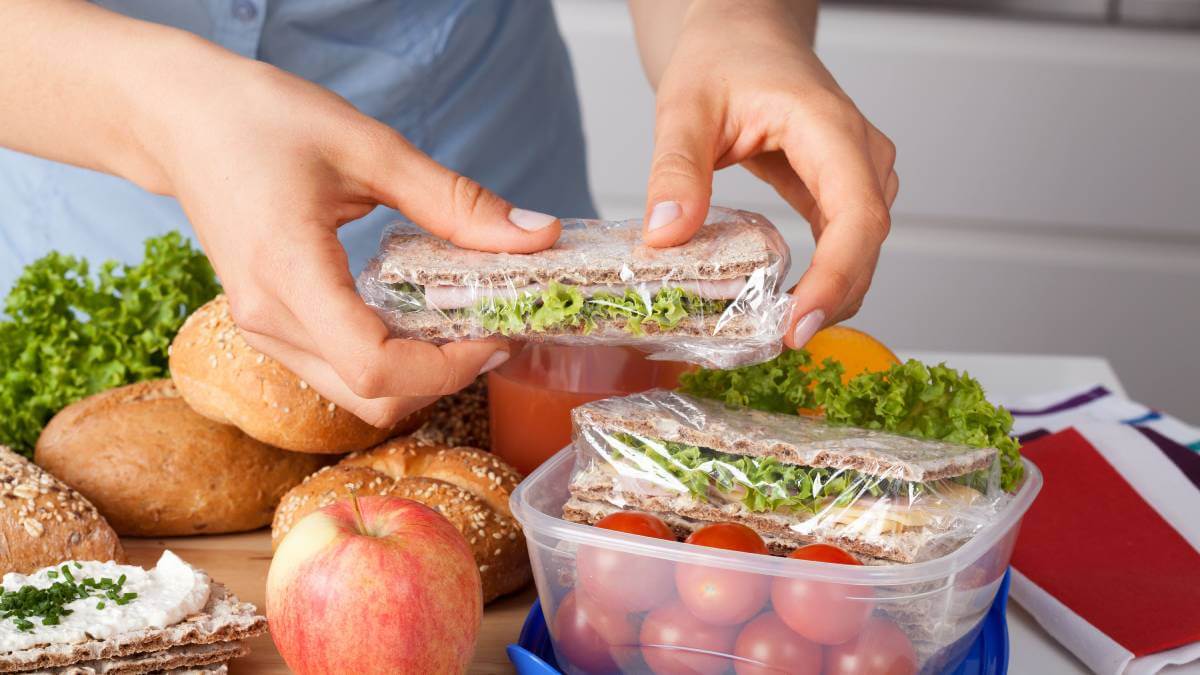Many single-use items can be reused in surprising ways that will reduce waste and save you money.
Of course, single-use products generally should be avoided where possible, but if you’re willing to get creative, you’ll see that many things can enjoy a second life. So, take a moment to consider how items can be reused before stacking them in the recycling box.
Here are some examples of ‘disposable’ products that you should be reusing.
Eyeglasses frames
A sturdy optical frame should last the life of the lenses, and beyond. If you like the frames you’re wearing and they’re still in good shape, you can refit them with new lenses when your prescription changes.
This can save you hundreds of dollars when compared with buying a whole new pair of glasses.
Of course, the frames need to be sturdy enough to withstand the change. Cheap injection moulded plastics will generally prove unsuitable for having new lenses inserted as their lifespan is very short.
Top of the line handmade acetates will often see several successful lens insertions before the telltale wear and tear starts to show.
Metal frames will often last well through several usage cycles and depending on the material may have repairs effected to extend their life considerably. Unless you’re trying to keep up with the latest trends in eyewear, just refit the old frames with new lenses.
Read: Seven ways to tackle plastic waste
Household cleaner bottles

The majority of the time, it’s cheaper to buy household cleaners and liquid soap in bulk. But those large containers can be unwieldy and difficult to store, so use them to refill the small containers you’ve already used and saved from landfill.
If you refill used bottles with a homemade cleaner, you could save even more money.
Wine corks
It’s good to keep a few spare corks for when you accidentally break one when removing it from a bottle, but old corks have a few other uses too.
If you chop them up and add them to soil, they make good moisture-retaining mulch. You can scrub high-carbon kitchen knives with them, or use corks to protect the blades. They can be cut and used as stamps when the grandchildren want to get crafty and, when dry, they even make great fire starters.
Towels and bedding
Many animal shelters ask for donations of old towels and bedding to keep the animals warm and cosy. Pillowcases can be used for enrichment and old doonas can be used as bedding.
Dryer sheets
After their first use, dryer sheets shouldn’t go straight into the rubbish. You can run them through the dryer a second time, and then use them to dust the house. They are great for polishing chrome and scrubbing soap scum too.
If you’re really determined, collect the lint from the dryer to make recycled paper or compostable seedling quilts.
Read: Tips for avoiding single-use plastics – in and out of the house
Carpeting
If you’re replacing a carpet, save some strips of the old one to use around the house. A folded piece of carpet works great as a knee cushion when doing housework or gardening that requires you to kneel.
Fixing a strip of carpet to your garage wall can help protect the car door from bumps. It can also protect hardwood floors from scrapes; just pop small squares under the legs of furniture when rearranging a room to avoid unsightly scratches.
Toothbrushes
Most people get through three or four toothbrushes each year. There are a few things you can do to extend their life before sending them off to landfill though.
Toothbrushes are great for cleaning hard to reach places like the bathroom and kitchen grout, in between keys on a keyboard and the corners of fish tanks.
They’re even good for personal grooming – use an old toothbrush to clean your fingernails after gardening or applying hair dye.
Gift bags
A nicely wrapped present is extra special, but don’t throw gift bags, ribbons and other decorations away. Fancy gift bags can be carefully folded and saved for reuse. This way, you’ll be prepared for the next special occasion that seems to creep up on you.
Wrapping paper and tissue paper, if carefully handled, also can be used a second time.
Plastic condiment bottles
Empty squeeze bottles can be cleaned and filled with homemade salad dressings and sauces.
Old clothes

Those old clothes that are too worn-out to be donated could be kept to be worn when doing chores and housework, or re-purposed into cleaning rags.
Butter wrappers
Most people unwrap the butter, pop the stick into a holder and throw the wrapper away. But, instead of trashing them straight away, keep the wrappers in a sandwich bag. The next time you have to grease a baking tray or dish, you’ll have something ready to go.
Read: Ways to be less wasteful in the garden
Elastic bands
You know those extra-thick elastic bands that hold together heads of broccoli? They can be transformed into childproof locks to keep little explorers out of cupboards. Wherever you have two cupboard pulls located next to each other, link them with an elastic band so toddlers can’t pull the doors open.
They are also great for sealing a leaky hose, providing grip when opening a tight lip, or keeping slippery clothes on their hangers.
This list might seem like a lot but just pick a few to get you started and you’ll slowly start changing your habits over time to produce less waste.
What do you reuse that most people put straight into the rubbish? Do you have any surprising suggestions that we haven’t thought of?


“This can save you hundreds of dollars when compared with buying a whole new pair of glasses.” – sometimes. my recent experience: the price of ‘replacement lenses’ was more than ‘new lenses and frames’, similar quality. Disappointing.
I always have trouble when “opening a tight lip”.